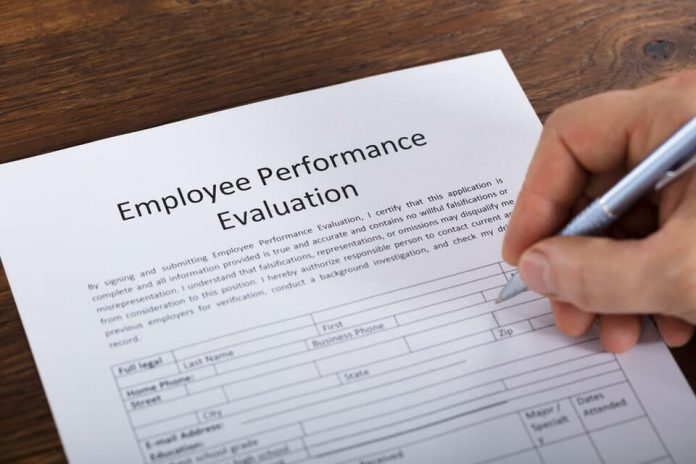Evaluating an employee’s performance can be challenging for managers as well as employees. These evaluations are integral because they often influence promotions and raises. However, there are ways to make the process much easier and more effective. Continue reading to learn all about how to evaluate an employee performance.
What is a Performance Evaluation?
A performance evaluation is a detailed review of an employee’s work over a specific period. Managers assess employees based on their job descriptions and specific criteria. These include looking at their skills, accomplishments, and overall work quality. The goal is to determine whether the employer is meeting, exceeding, or falling short of the work quality.
Tracking and Managing an Employee’s Performance
There are several ways to track and manage an employee’s performance. Some of the ways include using software checklists or evaluation forms. While formal reviews may be done once or twice a year, ongoing assessments are necessary to understand each employee’s progress and activities. The following steps can come in handy while evaluating the performance.
Also read: How to Grow Your Small Business? 7 Tips for Small Business Owners
-
Updating job descriptions
Ensuring that job descriptions match the current responsibilities of the employees. This helps provide an accurate evaluation based on what the employee is supposed to do.
-
Setting clear performance expectations
After updating job descriptions, employers must revise their expectations for employee performance. Different roles have different outcomes, so it is important to communicate the expectations clearly.
-
Reviewing Previous Goals
Checking whether the employee has met the previous goals in their last evaluation. If they have not, their reasons should be discussed.
Factors to Consider While Evaluating an Employee’s Performance
Evaluating an employee’s performance is not an easy task. There are several steps involved. Some of the factors that aid in evaluating their performance are mentioned below.
-
Work Quality
Employers must ensure that the work quality is maintained. If there are any mistakes, feedback should be provided. They can gather feedback from the clients and team members to assess whether the work meets company standards.
-
Execution
Employers must also evaluate how the employee organizes, schedules and maintains their tasks. Their time management skills, creativity and communication with the team must be assessed here.
-
Progress
The employee’s growth must be assessed within a specific period. Verifying whether they have met their previous goals and whether they have learned any new skills and improved in their field must be done.
-
Communication
Employers must check how well the employees effectively share their ideas and listen to others. They should be able to express themselves well both verbally and in writing. They must also be able to receive feedback properly.
-
Job Expertise
Employers must consider the employees’ job knowledge and their specific roles. They must verify if they have the necessary skills and expertise, before recruiting. They must also be willing to expand their knowledge and learn new skills with time.
-
Problem-Solving and Decision Making
The employee must be able to use the presence of mind to solve any spontaneous problems. They must also be able to make decisions correctly and on time. Meeting deadlines on time and prioritising their goals are also important.
-
Teamwork
One key factor is how well the employees show teamwork. They must be polite and professional. More importantly, they should be able to collaborate effectively with others and maintain positive professional ethics.
Also read: Top Financial Ratios to Analyze a Company’s Performance
Why is Tracking Employee Performance Necessary?
Understanding how employees perform is necessary for effective management. It helps identify strengths and weaknesses, recognize those who excel, and provide support for those who are not able to perform accordingly. If performance is not tracked, employers might not be able to detect low morale or high turnover rates for the company.
Perks of Tracking Employee’s Performance
There are several benefits of tracking an employee’s performance. The first includes an increase in efficiency. Regular evaluations aid in identifying areas for improvement. It allows both managers and employees to set clear goals. When employees notice that their work is recognized, they are often motivated to improve. They can then align their goals with the company’s objectives. Secondly, Identifying strengths and weaknesses is also one of the benefits. Performance evaluations can aid in showing where employees excel and where they may require a little push. This information helps employers understand how to address common issues among the employees.
Most importantly, it provides higher employee satisfaction. This evaluation is required to know how well the employee is satisfied with their work. A company runs well when its employees are giving their best and are motivated. Therefore, these evaluations aid in understanding their concerns and needs. Finally, scheduled evaluations create opportunities for open communication. This allows time for discussion between employers and employees. This could enhance job promotions or raises.
Also read: 6 Tips for Boosting An Employee?s Performance
Determining evaluations for employee performance is not an easy task. However, with the right attitude and approaches, this becomes an integral part of a company’s professional goals. It enhances the work practices of not only the manager or the employer but also the employee.








